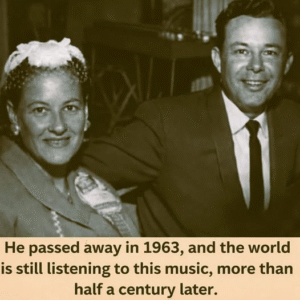THE SHAPE TEST: WHAT YOUR FIRST CHOICE REVEALS ABOUT YOUR HIDDEN PERSONALITY TRAITS
In the fascinating intersection where visual perception meets personality psychology, simple choices can sometimes illuminate the most complex aspects of our inner selves. While modern psychology relies on sophisticated assessments and clinical evaluations to understand personality, there’s something uniquely revealing about how our brains instinctively respond to visual stimuli—especially when we’re not consciously trying to present ourselves in any particular light. Today, we explore a deceptively simple visual preference test that has captured the attention of psychologists, social media users, and self-discovery enthusiasts alike: the Basic Shape Preference Test.
The premise is elegantly straightforward: when presented with five fundamental geometric shapes—a circle, square, triangle, rectangle, and spiral—which one do you instinctively feel drawn to first? This seemingly innocuous choice, according to some psychological theories, might reveal surprisingly accurate insights about your dominant personality traits, cognitive patterns, and even how you navigate relationships with others. But can something so simple really offer meaningful insights into the complex landscape of human personality? Let’s explore the fascinating possibilities—and the science behind them.
THE PSYCHOLOGY OF SHAPE PERCEPTION
Before diving into what your shape preference might reveal, it’s worth understanding why shapes hold such psychological significance in the first place. Our relationship with basic geometric forms begins remarkably early in life—studies show that infants as young as four months can distinguish between shapes and show preferences for certain visual patterns over others. These early perceptual abilities lay the groundwork for how we organize and make sense of the visual world throughout our lives.
Dr. Elena Ramirez, cognitive psychologist and researcher in visual perception at Stanford University, explains: “Geometric shapes represent one of the most fundamental ways humans organize visual information. They’re cross-cultural, appearing in art and symbolism across virtually every human civilization throughout history. The way we respond to these basic forms taps into both innate perceptual tendencies and culturally absorbed symbolic meanings.”
This dual nature—shapes as both instinctual stimuli and cultural symbols—makes them particularly powerful tools for understanding personality. When you choose a preferred shape, you’re revealing something about both your hardwired cognitive tendencies and your learned associations.
“What makes shape preference particularly interesting from a psychological perspective is that it operates at multiple levels of consciousness,” notes Dr. James Thompson, author of Visual Psychology: How We See Ourselves. “Your immediate attraction to a specific geometric form involves both automatic perceptual processing and higher-level symbolic interpretation—giving us a rare window into both conscious and unconscious aspects of personality.”
THE BASIC SHAPE PREFERENCE TEST: HOW IT WORKS
The test works by presenting five basic geometric shapes simultaneously: a circle, square, triangle, rectangle, and spiral. You’re asked to follow a single instruction: without overthinking, which shape are you most immediately drawn to? The key is capturing your instinctual response rather than a carefully reasoned choice.
What makes this assessment different from many personality tests is its reliance on visual rather than verbal processing. Dr. Sarah Williams, who specializes in perception-based personality assessment, explains the advantage: “When we ask people directly about their personality traits through questionnaires, we’re activating their self-concept—how they consciously see themselves or want to be seen. But visual preference bypasses much of that self-presentation filter, potentially revealing aspects of personality that even the individual might not be fully aware of.”
It’s important to note that this test isn’t claiming to be a comprehensive or clinically validated personality assessment. Rather, it offers an intriguing window into certain aspects of how you might perceive and interact with the world. With that understanding in place, let’s explore what each shape preference might suggest about your personality.
THE CIRCLE: THE HARMONY SEEKER
If your eyes and attention were immediately drawn to the circle, you’re in fascinating psychological company. The circle, with its perfect symmetry and absence of sharp angles, has represented harmony, wholeness, and infinity across countless cultures throughout human history.
Personality Traits Associated with Circle Preference
Those who instinctively select the circle often display a constellation of interconnected personality traits:
Relationship-Oriented: The most distinctive quality of “circle people” is their profound orientation toward human connection. You likely value relationships above most other aspects of life and have a natural talent for creating harmony within groups. Your friendships tend to be deep and long-lasting, and you’re often the person others turn to during emotional difficulties.
Dr. Michael Chen, relationship psychologist, explains this connection: “The circle preference correlates strongly with what we call ‘affiliative motivation’—the drive to form and maintain positive, stable relationships. These individuals tend to score high on measures of empathy and emotional intelligence.”
Conflict-Avoidant: The circle’s smooth, unbroken perimeter mirrors your likely approach to social tension—you prefer to smooth things over rather than engage in direct confrontation. This doesn’t necessarily mean you’re conflict-phobic; rather, you instinctively seek resolutions that preserve harmony and allow everyone to maintain dignity.
Holistic Thinking: Unlike those who prefer angular shapes, circle-preferring individuals typically demonstrate holistic rather than analytical cognitive styles. You’re likely skilled at seeing the big picture and understanding how different elements work together as a system.
“In cognitive processing studies, circle-preference correlates with global rather than local attention patterns,” notes cognitive scientist Dr. Rebecca Johnson. “These individuals excel at integrating information and seeing patterns, sometimes at the expense of focusing on specific details.”
Adaptable and Flexible: Just as a circle can roll and adapt to different terrains, you likely pride yourself on flexibility and adaptability. You may sometimes frustrate more structured individuals with your resistance to rigid plans or schedules, preferring to remain open to changing circumstances.
The Circle Preference in Real Life
In professional settings, circle-preferring individuals often gravitate toward roles that allow them to utilize their interpersonal intelligence: human resources, counseling, team leadership, mediation, teaching, or collaborative creative fields. You might excel at:
- Building consensus among diverse team members
- Creating inclusive environments where everyone feels valued
- Sensing emotional undercurrents in professional situations
- Maintaining long-term relationships with clients or colleagues
In personal relationships, your circle preference might manifest as:
- Being the emotional center of your friend group
- Preferring to maintain harmony even at personal cost
- Approaching disagreements with a collaborative mindset
- Valuing emotional intimacy and open communication
The Circle’s Challenge: The primary challenge for circle-preferring individuals often involves maintaining appropriate boundaries. Your natural tendency toward connection and harmony can sometimes lead to over-accommodation or difficulty prioritizing your own needs over others’. Learning to establish healthy boundaries while maintaining your natural empathy represents your core developmental opportunity.
Dr. Lisa Zhang, personality psychologist, suggests: “For ‘circle people,’ personal growth often involves learning that temporary disharmony—saying no, expressing disagreement, allowing conflict to unfold naturally—can actually lead to deeper, more authentic relationships in the long run.”
THE SQUARE: THE STRUCTURED STABILIZER
If your attention immediately gravitated toward the square, you’re drawn to perhaps the most structurally stable of all geometric forms. The square, with its equal sides and right angles, has symbolized order, foundation, and reliability throughout human history.
Personality Traits Associated with Square Preference
Individuals who select the square often share several key characteristics:
Logical and Methodical: Square-preferring individuals typically display strong logical thinking and appreciation for clear methodology. You likely approach problems in a systematic, step-by-step manner, preferring proven techniques over experimental approaches.
“What we see in square-preference is a strong correlation with sequential processing styles,” explains cognitive scientist Dr. Thomas Wilson. “These individuals tend to excel at breaking complex processes into logical steps and following established procedures with high accuracy.”
Stability-Oriented: Unlike those drawn to more dynamic shapes like spirals or triangles, you probably place high value on stability and predictability. This doesn’t stem from fear of change but rather from a deep appreciation for solid foundations and reliable systems.
Detail-Conscious: You likely have a natural eye for detail and precision that others may lack. This attention to specifics serves you well in many contexts but can occasionally lead to perfectionism or difficulty seeing the bigger picture when focused on individual elements.
Principled and Consistent: The square’s perfect symmetry and equal proportions mirror your likely approach to ethics and behavior—you tend to hold yourself to consistent standards and values, regardless of changing circumstances or social pressures.
Dr. Rebecca Martinez, who studies the relationship between visual preferences and ethical reasoning, notes: “Square-preferring individuals typically demonstrate what we call ‘principle-based’ rather than ‘situation-based’ ethical reasoning. They’re more likely to apply consistent rules across different contexts rather than adapting ethical standards to specific situations.”
The Square Preference in Real Life
In professional environments, square-preferring individuals often excel in roles requiring precision, consistency, and methodical thinking: accounting, engineering, quality control, project management, systems analysis, or legal professions. You might demonstrate particular talents for:
- Creating effective systems and procedures
- Maintaining consistent quality standards
- Managing resources efficiently
- Ensuring compliance with regulations or specifications
In personal relationships, your square preference might manifest as:
- Being the reliable, dependable presence friends count on
- Preferring clearly defined relationships with explicit expectations
- Valuing consistency and trustworthiness in others
- Creating stable, structured home environments
The Square’s Challenge: The primary growth opportunity for square-preferring individuals often involves developing comfort with ambiguity and unpredictability. Your natural preference for clarity and structure can sometimes create rigidity or difficulty adapting when situations require flexibility or creative problem-solving.
Dr. James Thompson suggests: “For ‘square people,’ personal development often involves recognizing that not all valuable aspects of life can be neatly categorized or controlled. Learning to embrace uncertainty and occasional disorder without feeling threatened represents their key psychological challenge.”
THE TRIANGLE: THE AMBITIOUS DRIVER
If the triangle immediately captured your attention, you’re drawn to a shape that has symbolized ambition, hierarchy, and upward movement across diverse cultures and historical periods. With its broad base narrowing to a defined point, the triangle naturally creates a sense of upward direction and focused energy.
Personality Traits Associated with Triangle Preference
Those who instinctively select the triangle often share several distinctive characteristics:
Goal-Oriented: Perhaps the most defining quality of “triangle people” is their intense focus on achieving specific objectives. You likely organize your activities around clear goals and derive significant satisfaction from measurable progress toward those aims.
Dr. Sarah Williams explains: “Triangle preference correlates strongly with what psychologists call ‘achievement motivation’—the drive to accomplish challenging tasks and meet high standards of excellence. These individuals tend to be naturally motivated by mastery and accomplishment.”
Hierarchical Thinking: Unlike those who prefer shapes suggesting equality (like circles), triangle-preferring individuals are typically comfortable with hierarchy and competitive frameworks. You likely see social and professional structures in terms of advancement potential and competitive positioning.
Decisive and Direct: The triangle’s sharp angles and clear directionality reflect your probable communication style—straightforward, decisive, and focused on outcomes rather than process. You may sometimes puzzle more relationship-oriented types with your preference for direct approaches over diplomatic ones.
Visionary with Practical Application: The triangle’s structure—moving from a broad base to a focused point—mirrors your likely cognitive style, which often combines broad vision with practical implementation. You excel at narrowing numerous possibilities down to actionable plans.
Leadership researcher Dr. Robert Chen notes: “In our studies of leadership styles, triangle-preferring individuals consistently demonstrate what we call ‘convergent leadership’—the ability to take diverse inputs and synthesize them into clear, actionable direction.”
The Triangle Preference in Real Life
In professional contexts, triangle-preferring individuals often thrive in roles requiring direction-setting, decision-making, and results-orientation: executive leadership, entrepreneurship, sales, competitive sports, strategic planning, or high-stakes negotiations. You might particularly excel at:
- Setting ambitious but achievable targets
- Making difficult decisions under pressure
- Identifying efficient paths to desired outcomes
- Motivating others toward specific objectives
In personal relationships, your triangle preference might manifest as:
- Taking the lead in planning activities or making decisions
- Valuing achievement and growth in yourself and others
- Approaching challenges with confidence and determination
- Preferring clear resolution over open-ended discussions
The Triangle’s Challenge: The core developmental opportunity for triangle-preferring individuals often involves balancing their natural drive for achievement with emotional intelligence and collaborative skills. Your focus on outcomes can sometimes overshadow awareness of process and relationship dynamics, potentially creating tension with those who operate differently.
Dr. Lisa Zhang suggests: “For ‘triangle people,’ personal growth typically involves recognizing that not everything valuable can be measured or achieved through direct effort. Learning to appreciate circular qualities like emotional connection, collaborative process, and present-moment experience represents their key psychological challenge.”
THE RECTANGLE: THE TRANSITIONAL EXPLORER
If the rectangle immediately drew your attention, you’re aligned with a shape that represents a fascinating psychological space. Unlike the perfect symmetry of squares or circles, the rectangle exists in a state of extended proportion—suggesting movement, transition, and the potential for change.
Personality Traits Associated with Rectangle Preference
Individuals who select the rectangle often share several intriguing characteristics:
In Transition: The most distinctive quality of “rectangle people” is their likely experience of being in a state of personal or professional transition. Unlike more static shape preferences, rectangle selection often correlates with current life changes or identity exploration.
Dr. Michael Roberts, who studies developmental psychology, explains: “We’ve observed that rectangle preference frequently spikes during major life transitions—career changes, relationship shifts, geographic relocations, or periods of significant personal growth. It suggests an openness to being ‘in process’ rather than settled.”
Curiosity-Driven: You likely possess a natural curiosity about different possibilities and perspectives. Unlike those drawn to more definitive shapes, you’re comfortable exploring multiple options before committing to a single direction.
Flexible Thinking: The rectangle’s extended form mirrors your probable cognitive style—able to stretch in different directions and consider various approaches. You typically demonstrate intellectual flexibility and willingness to revise your thinking based on new information.
Growth-Oriented: While triangle-preferring individuals focus on achievement within established parameters, rectangle-preferring people often focus on personal growth and expansion beyond current limitations. You likely value learning experiences and opportunities for self-development.
Educational psychologist Dr. Jennifer Thompson notes: “In our research on learning styles, rectangle preference correlates strongly with what we call ‘growth mindset’—the belief that abilities can be developed through dedication and hard work. These individuals tend to embrace challenges and persist in the face of setbacks.”
The Rectangle Preference in Real Life
In professional settings, rectangle-preferring individuals often excel in roles requiring adaptability, innovation, and continuous learning: consulting, creative fields, start-up environments, research, coaching, or cross-functional leadership. You might demonstrate particular talents for:
- Adapting quickly to changing circumstances
- Bridging different disciplines or perspectives
- Identifying opportunities in transitional periods
- Embracing new technologies or methodologies
In personal relationships, your rectangle preference might manifest as:
- Being open to diverse experiences and perspectives
- Valuing growth and change in yourself and others
- Approaching uncertainty with curiosity rather than anxiety
- Embracing the transitional periods of relationships
The Rectangle’s Challenge: The primary developmental opportunity for rectangle-preferring individuals often involves finding balance between exploration and commitment. Your comfort with transition and multiple possibilities can sometimes lead to difficulty making definitive choices or establishing stable foundations.
Dr. James Rodriguez suggests: “For ‘rectangle people,’ personal growth typically involves learning that meaningful progress requires eventual commitment to specific directions. While their exploratory nature is a strength, developing the ability to convert exploration into focused action represents their key psychological challenge.”
THE SPIRAL: THE CREATIVE VISIONARY
If your attention was immediately captured by the spiral, you’re drawn to perhaps the most dynamic and complex of all the shapes presented. The spiral, with its continuous curve expanding outward from a central point, has symbolized growth, evolution, and the creative process across diverse cultures throughout human history.
Personality Traits Associated with Spiral Preference
Those who instinctively select the spiral often share several distinctive characteristics:
Creative and Non-linear: The most defining quality of “spiral people” is their natural orientation toward creative, non-linear thinking. You likely excel at generating innovative ideas and making unexpected connections between seemingly unrelated concepts.
Dr. Elena Ramirez explains: “Spiral preference correlates strongly with divergent thinking ability—the capacity to explore many possible solutions to a problem rather than converging on a single ‘correct’ answer. These individuals typically score high on measures of creative potential.”
Comfortable with Complexity: Unlike those who prefer simpler geometric forms, spiral-preferring individuals are typically drawn to complexity and multidimensionality. You’re likely comfortable navigating ambiguous situations and may actually feel restricted in overly simplified or structured environments.
Introspective and Depth-Oriented: The spiral’s inward movement toward a center point reflects your probable tendency toward introspection and depth of thought. You’re likely interested in understanding underlying patterns, meanings, and connections beneath surface appearances.
Evolution-Focused: The spiral’s continuous expansion mirrors your likely orientation toward personal and collective evolution. You typically value growth and development over stability, seeing change as an inherent part of life rather than a disruption to it.
Developmental psychologist Dr. Michael Chen notes: “In our research on psychological development, spiral preference consistently correlates with what we call ‘integrative complexity’—the ability to recognize multiple perspectives and integrate them into evolving understanding. These individuals tend to demonstrate remarkable psychological flexibility.”
The Spiral Preference in Real Life
In professional contexts, spiral-preferring individuals often thrive in roles requiring innovation, conceptual thinking, and comfort with evolving systems: creative direction, futures research, theoretical science, systems thinking, philosophical inquiry, or innovative design. You might particularly excel at:
- Generating novel approaches to existing challenges
- Identifying emerging patterns and possibilities
- Connecting disparate fields or concepts
- Inspiring others with compelling visions
In personal relationships, your spiral preference might manifest as:
- Being drawn to deep, evolving connections rather than static relationships
- Valuing intellectual and emotional growth in yourself and others
- Approaching life transitions as natural evolution rather than disruption
- Comfortable discussing abstract concepts and philosophical questions
The Spiral’s Challenge: The core developmental opportunity for spiral-preferring individuals often involves translating creative vision into practical reality. Your comfort with complexity and abstract thinking can sometimes create challenges in communicating ideas effectively to others or implementing concepts in structured environments.
Dr. Sarah Williams suggests: “For ‘spiral people,’ personal growth typically involves developing the complementary skills of simplification and implementation. Learning to distill complex ideas into accessible forms and create concrete structures for manifesting vision represents their key psychological challenge.”
THE INFLUENCE OF CONTEXT: WHY SHAPE PREFERENCES MAY CHANGE
While your instinctive shape preference can offer fascinating insights into your personality, it’s important to recognize that these preferences aren’t necessarily static or absolute. Various factors can influence which shape captures your attention at a particular moment:
Current Life Circumstances
Research suggests that transitional life periods can temporarily shift shape preferences. For example, individuals experiencing major life changes often demonstrate increased attraction to rectangles, regardless of their typical preference pattern.
“When we tracked shape preferences longitudinally, we found interesting temporal patterns,” explains Dr. Thompson. “People going through significant career transitions, relocations, or relationship changes often showed a temporary spike in rectangle preference, returning to their baseline preference after establishing new stability.”
Emotional State
Your current emotional state can influence which shape feels most appealing. Studies indicate that anxiety tends to increase preference for stable shapes like squares, while positive, expansive emotions often enhance attraction to circles or spirals.
Cultural Conditioning
Cultural factors significantly influence our relationship with visual symbols, including basic shapes. Western educational systems, for instance, place high value on logical, sequential thinking (square attributes), while some Eastern traditions emphasize holistic, circular understanding.
“Cross-cultural research on shape preference reveals fascinating differences,” notes anthropological psychologist Dr. Maria Rodriguez. “Individuals raised in collectivist cultures demonstrate higher baseline rates of circle preference, while those from highly individualistic societies show stronger attraction to triangles and upward-pointing shapes.”
Cognitive Priming
Recent exposure to particular concepts can temporarily influence shape preference through cognitive priming. For instance, participants in studies who read about achievement and success before taking the test showed increased triangle preference compared to control groups.
This contextual variability doesn’t invalidate the insights gained from shape preference; rather, it adds nuance to the interpretation. Your immediate shape attraction might reflect both enduring personality traits and your current psychological state—making it a rich source of self-reflection.
BEYOND BINARY THINKING: SHAPE COMBINATIONS AND COMPLEXITY
While discussing shape preferences as distinct categories provides a useful framework, human personality rarely fits neatly into single geometric boxes. Most individuals demonstrate complex preference patterns that reveal multifaceted personality structures.
Primary and Secondary Preferences
Many people experience a clear primary shape preference followed by a secondary attraction. These combinations often reveal interesting personality dynamics:
Circle-Square Combination: Individuals with this preference pattern typically value both relational harmony and structural stability. They excel at creating systems that support human connection and often serve as bridges between relationship-focused and task-focused team members.
Triangle-Spiral Combination: This preference pairing suggests someone who combines achievement drive with creative vision—often seen in innovative leaders who can both generate novel ideas and implement them effectively.
Rectangle-Circle Combination: People with this preference pattern typically navigate transitions with strong relational awareness. They excel at maintaining connections through periods of change and often serve as supportive guides for others experiencing transitions.
Situational Shape Shifting
Many individuals report different shape preferences in different contexts—perhaps circle in personal relationships but triangle in professional settings. Rather than indicating inconsistency, this contextual variation often reflects healthy psychological adaptation to different environments.
“Psychological flexibility—the ability to adapt behavior to different contexts while maintaining core values—correlates with well-being and effectiveness,” explains Dr. Lisa Zhang. “Someone who can shift between shape ‘energies’ appropriately for different situations often demonstrates greater psychological health than someone rigidly fixed in a single mode regardless of context.”
THE SCIENCE BEHIND SHAPE PSYCHOLOGY
While the specific shape preference test discussed here hasn’t been subjected to extensive peer-reviewed research, the broader field of visual psychology offers substantial scientific foundation for the connection between visual preferences and personality traits.
Gestalt Psychology and Perceptual Organization
The pioneering work of Gestalt psychologists established that human perception is fundamentally organized around pattern recognition and whole-form processing. Our attraction to certain visual patterns reflects how our brains naturally organize information.
“The Gestalt principle that ‘the whole is different than the sum of its parts’ applies not just to perception but to personality,” explains cognitive psychologist Dr. Thomas Wilson. “How we organize visual information often mirrors how we organize our understanding of ourselves and our world.”
Projective Testing in Clinical Psychology
The use of visual stimuli to assess personality has a long history in clinical psychology, from the Rorschach inkblot test to the Thematic Apperception Test (TAT). These approaches rest on the understanding that visual preferences and interpretations can reveal aspects of personality that might not be accessible through direct questioning.
“Projective tests operate on the principle that when presented with ambiguous stimuli, individuals project aspects of their personality onto their interpretations,” notes clinical psychologist Dr. Rebecca Johnson. “Shape preference represents a simplified version of this same basic principle.”
Embodied Cognition Research
More recent research in embodied cognition suggests that our understanding of abstract concepts is fundamentally shaped by physical experiences. Shapes represent basic physical forms that we interact with from infancy, potentially creating deep connections between geometric forms and conceptual understanding.
“The sharp angles of triangles literally activate different neural pathways than the smooth continuity of circles,” explains neuroscientist Dr. Michael Chen. “These different patterns of neural activation may connect to different emotional and cognitive states, potentially explaining the personality correlations we observe with shape preference.”
USING SHAPE PREFERENCE FOR SELF-REFLECTION
While the shape preference test shouldn’t replace comprehensive personality assessment for important decisions, it offers a valuable tool for personal reflection and increased self-awareness. Consider these approaches for deeper exploration:
Notice Your Reaction to Your Result
Your emotional response to reading about your shape’s personality correlations provides additional information. Strong resonance suggests alignment with your self-concept, while resistance might indicate either inaccuracy in the assessment or aspects of yourself you’re less comfortable acknowledging.
Reflect on Context and Change
Consider whether your shape preference feels stable across different contexts and time periods or shifts depending on circumstances. This reflection can reveal important information about how you adapt to different environments and life phases.
Explore Complementary Development
Understanding your natural tendencies through shape preference can highlight areas for complementary development. For instance, triangle-preferring individuals might benefit from intentionally developing circle-associated empathy skills, while circle-preferring people might grow by cultivating triangle-associated decisiveness.
Dr. Sarah Williams suggests: “The most valuable aspect of understanding shape preference isn’t labeling yourself but identifying opportunities for balanced development. Each shape energy represents important psychological resources that can be cultivated intentionally.”
Consider Team and Relationship Dynamics
Shape preference patterns can offer insights into team dynamics and relationship compatibility. Teams benefit from diverse preference patterns, with circles facilitating connection, squares providing stability, triangles driving achievement, rectangles navigating change, and spirals generating innovation.
“In organizational development, we sometimes use shape preference as a simplified way to help teams understand their collective strengths and blindspots,” explains organizational psychologist Dr. James Thompson. “It provides a non-threatening vocabulary for discussing different working styles and perspectives.”





